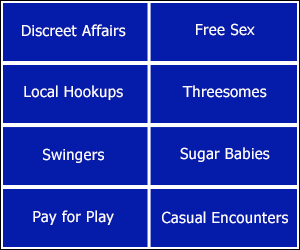I've have many other indicators, but here I want to comment on strictly anecdotal evidence on ATFs that I know, with #4 (below) being a bellweather or sorts which could well indicate that the strip business is getting hit hard, or soon will be
Listed are 4 AFTs of varying levels, the later 2 being very significant with ongoing constant contact and interaction with me of some type, the first 2 far more casual and less frequent.
-
low 20's, long legged beauty, a bit ditzy at times but Ok in general (fully american but latin origin) - used to throwing money around, but no business way way off, however is expanding her whoring side-business - so she's doing OK recently when I last talked with her several weeks back
-
30's dancer, very pretty petite woman (latin, in USA 8 yrs) nice person, very diligent and serious about business, great personality, english better than average, dooesn't talk about business much, impression is its slow, not sure one way or the other
-
30's (foreign origin came as a child to america) (highest top shelf looks) shy, very feminine, super nice personality - good dancer, very natural and super exotic and puts alot into dances, currently has very serious financial problems due to downturn in business, she is the main income for family and low-earning boyfriend. This dancer never asks guys for dances, and now for the first time in a multi-year career is starting to do this, and its helping a bit, but not enough, but she has a very large extended family in america to keep her from going under financially
-
30's, very attractive girl, (Latin) (in USA only a few years) has brother here (one she lives with and is now layed off in construction business), a large amount of her earnings at one point (when she was earning big money last year and earlier this yr) were being sent back to her country of origin to help her mother and her child. This dancer is exceptionally capable and self sufficient, is an extraordinarily sensual and energic dancer, and is an expert on the the "wanna dance" solicitation method, and she knows exactly how to approach patrons and what do say in her very sexy accent, and will ask 50 guys a shift to dance and won't be bothered by rejection. I've known this dancer for most of this year and she lives very frugally, experienced poverty as a child and she's never once mentioned bills, but she's (for the first time ever) now bringing up issue (during a normally strong pre-holiday Christmas season)as to whether she can successfully pay her upcoming rent bill, so she's telling me about double-shifting ahead of the end of the month to leave a cushion. I was in the club with her today, and there was a huge afternoon crowd, but out of 100 plus guys, probably only about 5 or 6 in the 2 hours I was there, were buying any dances, and there were lots of pretty girls in the club at the time
Ok maybe it Holiday special SS edition, that might be part of it, however I think its a strong indicator - that with a dancer with this kind of talent for the business having problems - that the strip business in this locale (northeast USA) is in free fall, apparently because of discretionary cash drying up or something else happening in the economy


I don't visit enough different clubs to make a judgement one way or another, but the club I visit most frequently is located in Michigan, and yes, over the past year or so, things do seem to be slow. Granted, Michigan's economy is far from robust right now, so that could be the reason, but I think there are other factors also.
I was at the club last Friday night and the place was dead for a Friday. Not only a slim crowd for a Friday night, but the place lacked energy. No excitement. I made a comment to one of the veteran dancers that although the new girls here are OK, they really are not dancer material. I think the lure of "easy money" has enticed too many women into the business that are not really hot enough to be strippers and it has taken the toll with customers. They are tired of going into a strip club and seeing a certain percentage of dancers as "just ordinary". Don't get me wrong, there are still plenty of hotties, but I think the market has been flooded with too many average-looking dancers.